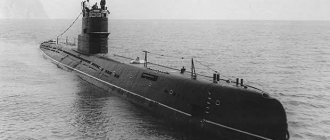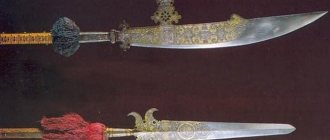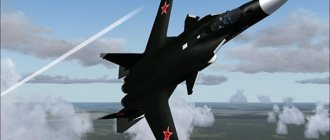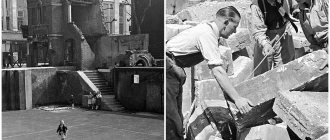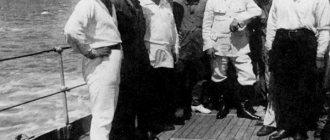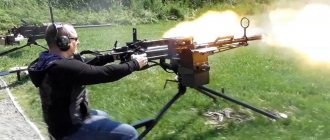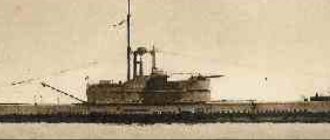Amphibious saboteurs part 3
- Published: 12/07/2018, 18:43
- Seal
Contents of the material
- Amphibious saboteurs part 3
- All pages
Page 1 of 19
Amphibious saboteurs
The section was created based on the book by A.E. Taras, V.V. Beshanov “Frog People” and based on other materials...
Part 3
Part 1
Part 2
Part 4
Part 5
GERMAN OPTION
In 1943-44. The Germans, who were gradually losing their positions on the seas under the attacks of the Allied fleets, began to turn to the tactics of a “small war”, which they had previously dismissed. Now their military theorists, who had previously rejected sabotage methods of naval warfare, came to the conclusion that they could cause serious damage to enemy forces. The basis for such a radical change in views was the significant successes that Italian and British naval saboteurs managed to achieve. They convincingly proved that a few dozen brave, well-trained fighters using simple and cheap means can achieve the most serious results. The Germans were especially impressed by the explosion of the battleship Tirpitz by British midget submarines in September 1943.
All this served as an impetus for the creation of “small combat weapons formations” in the German Navy. The idea received full approval from the commander-in-chief of the submarine fleet, Grand Admiral Karl Doenitz.
Connection "K"
At the end of 1943, in the seaside town of Heiligenhafen, the formation of several naval detachments began, which received the general name “formations K” (from Kleinkampfverbande - small battle formations). Admiral Helmut Heye was appointed their commander.
Hellmuth Guido Alexander Heye (Beckingen, 9 August 1895 - Mittelheim, 10 November 1970) German admiral, veteran of the First World War, was commander of the heavy cruiser "Admiral Hipper" during the Second World War, awarded the Knight's Cross of the Iron Cross January 18, 1941.
Doenitz gave him very broad powers. This allowed Haya to control all aspects of the creation, preparation and use of underwater (as well as surface) sabotage weapons. In particular, he supervised the design of new weapons, their production, testing, selection and training of personnel, and participated in the planning of specific operations. In addition, Haye represented the "K-force" at the main headquarters of the fleet. This approach to management issues turned out to be very fruitful and gave good results.
The first intake of the new unit was thirty people. In the fifth year of a brutal war, recruiting a sufficient number of physically strong and psychologically stable men capable of carrying out sabotage missions was a rather difficult task. Nevertheless, recruits underwent a rigorous selection process before joining the detachment. Next, intensive training of soldiers began under the direct supervision of Lieutenant Commander Opladen. Members of the detachment did gymnastics, swimming, jiu-jitsu, studied radio, underwent diving and demolition training, studied captured documents about the tactics of the English commandos, and practiced pronunciation with foreign language specialists. True, the latter paid their main attention not so much to knowledge of the rules of grammar, but to the study of soldiers’ rude words in the enemy’s vocabulary. Particular attention was paid to instilling courage and personal initiative; alarms, forced marches, and deployments to areas with individual assignments were regularly carried out. One of the cadets wrote: “Our group took the so-called “small exam of courage” using the Opladen method. Eight to ten of us are taken out into the open and ordered to lie on the ground with our heads towards the center of an imaginary circle with a diameter of 4 meters. Then a hand grenade is placed in the center, from which the safety pin is pulled out. We count the seconds. There is an explosion, and fragments fly above us... of course, we were wearing steel helmets. But still…"
The Italians provided great assistance in preparation, who handed over samples of their sabotage weapons to the former allies, and also shared their experience in using them and their developed tactics. This made it possible to significantly speed up the process - time was running out, the Third Reich was already bursting at the seams. In the spring of 1944, the first fighters of the formation were fully prepared for combat operations, both morally and physically. Technical equipment has also arrived. The number of officers and sailors increased so much that it became possible to form the first three naval assault detachments - "Marine Einsatzkommando" (MEK): 60th First Lieutenant Hans-Friedrich Prinzhorn (Prinzhorn), 65th First Lieutenant Richard and 71st First Lieutenant MA Friedmar Wolters (Walters).
First Lieutenant Hans-Friedrich Prinzhorn (left) tells Captain Friedrich Böhme about the successful operation in Antwerp on December 5, 1944.
In addition to the commander, such a unit included 22 more people. Each detachment had at its disposal 15 vehicles with the necessary equipment, communications equipment and a six-week supply of food. The MEK units thus equipped went to Denmark and France, to the place of their upcoming actions, since the main purpose of all small assault weapons created by the Germans was to repel the expected invasion of the Anglo-Americans in northern France.
Admiral Haye's headquarters, which led the assault troops, was located in Timmendorferstadt (a suburb of Lübeck). To supply saboteurs with all the necessary information about the theater of operations, a scientific research center was created in May 1944 in Schönenberg under the leadership of Konrad Foppel. He could provide detailed information about almost any place on the globe within 24 hours. Its storage facilities contained 250 thousand land and sea maps, 500 thousand photographs and other documents. The center developed plans for global operations: disabling the Suez Canal, attacking the New York port, and carrying out sabotage operations in India.
The assault troops were quickly thrown into action: in the summer of 1944, the Western Allies finally landed in Normandy. In fierce battles, sometimes carrying out tasks of incredible difficulty, German naval saboteurs proved themselves to be excellent. Hans Prinzhorn's 60th MEK alone carried out 24 acts of sabotage in France, Holland and Belgium. Among them are such well-known operations as the destruction of the coastal battery at the mouth of the Seine, the explosion of the Antwerp Lock, and the destruction of the Nijmegen bridges.
The formations of formation "K" included groups of combat swimmers, guided torpedoes, midget submarines and exploding boats.
Training Team 700 - "Sea Fighters"
As in Italy, the idea of creating units of light divers-saboteurs was promoted by young enthusiasts. In Germany, it was the famous diver Alfred von Wurzian, a participant in the sensational underwater expedition to the island of Curacao in the Dutch West Indies before the war.
Alfred von Wurzian (24 September 1916 – 21 January 1985) was a German army sergeant and officer in the navy and training regiment "Kurfürst". The underwater pioneer from Austria is considered the founder of German naval warfare during World War II.
It was simply brushed aside while the Wehrmacht was winning victories, so it took a lot of time to convince the German command to at least do something in this direction.
Finally, in May 1943, Wurzian, together with his friend Richti Reiman, was seconded to the 10th MAS Flotilla. Here they went through a harsh school under the leadership of Eugenio Volka in the Gamma group. In December 1943, a joint Italian-German team demonstrated its skill in mining the ships of a special commission. The actions of the underwater saboteurs made an impression, and on January 2, 1944, Wurzian received at his disposal 30 people sent from the Reich to train combat swimmers. These were mainly aquatic athletes. Classes of the new unit took place first in the pool of the city of Valdagno, and then in the Venetian Lagoon.
The island of San Giorgio Maggiore was the second combat swimmer training camp near Valdagno.
Exhausting training had a single goal: to teach first-class swimmers not to get lost under any circumstances. They were taught to overcome strong whirlpools, pass unharmed under the keel of a ship, and navigate the open sea using a wrist compass.
Before diving, the diver put on woolen underwear, and on top of it a knitted suit made of thick white six-piece to protect the body from the cold during many hours in the water. Over this was put on a rubber suit, which consisted of two parts. First, the diver put on trousers that ended with shoes at the bottom. Then he pulled the narrow rubber tube, which was the top of the trousers, up to the shoulders, where he wrapped it and pulled it back down to approximately hip level. Now a rubber shirt was put on over the head, which also reached to the hips. After this, the diver grabbed the edges of the trousers and shirt superimposed on each other with both hands and lifted them up again. The operation was repeated until the joint between the upper and lower parts of the suit turned into a “puff sausage.” A rubber strip 25 centimeters wide was glued onto the joint rolled in this way using a special solution. There were tight-fitting cuffs made of rubberized fabric on the wrists, and a similar collar around the neck. On top of the rubber suit, a protective one made of canvas was put on, which served for camouflage and protected the main suit from damage. Then came the turn of the belt with lead plates and flippers. The equipment was completed with a Drager oxygen breathing apparatus, which weighed 4 kg and allowed one to stay under water for about an hour.
German light diver of the Second World War.
Having mastered diving equipment, the saboteurs were trained to operate with small explosive charges (“fish”), weighing 7.5 kg, and with 3-ton torpedoes. The tactics of mining ships did not differ from the Italian ones. The saboteur swam to the target on his back at a slight angle to the surface. Only a face peeked out of the water, which was smeared with a thick cream mixed with soot for camouflage. Then a dark green net was pulled over the face, attached to a knitted hat. As a result, it was very difficult to detect any signs of the presence of a “sea fighter” on the surface of the water. The rule: “go with the flow” was the first commandment when completing the task. Vurtsian's combat swimmers quickly gained a reputation as excellent saboteurs. They demonstrated their skills in this area during training raids on the seemingly impregnable Italian naval arsenal.
On June 6, 1944, the Allied invasion of Normandy began. By this time, formation "K" had 30 fully trained combat swimmers. By mid-June, they received an order to allocate 10 people to conduct the first combat operation. From that moment until the end of the war, the German “frog people” most actively participated in the war, carrying out a number of brilliant operations. They, however, did not have the chance to mine a single enemy ship. The main task was to undermine bridges and hydraulic structures in the rear of the advancing enemy.
- Forward
- Back
- Forward
Prerequisites for the creation of mini-submarines
The war, which began in August 1914, was preceded by the technological revolution of the previous decade. New types of weapons appeared, brought to a high degree of reliability by the beginning of the war. Among them was a submarine that completely changed the course of warfare at sea. Our story is about a series of German submarines of the UB I type - the smallest of the actively fighting boats of the First World War, or - as the sailors who served on them called them - “tin tadpoles”. After the “miracle on the Marne”, thanks to which the Germans were stopped at Paris, events on the Western Front led to attempts by the warring parties to outflank the enemy. The “race to the sea” began, as a result of which the front buried itself in the English Channel, and this ended the maneuver phase of the war. Having buried themselves in the ground and switched to trench warfare, the opponents took a breath and began to invent ways to defeat each other.
As a result of the capture of the Belgian coast, the German fleet had at its disposal the seaports of Zeebrugge and Ostend, which were not taken into account in the pre-war plans for naval operations. Situated in close proximity to the English Channel and the British Isles, they opened up unprecedented possibilities for conducting combat operations on enemy communications and near enemy bases. The main route between Britain and France was via the English Channel from Dover to Calais. From the nearest German base, Helgoland, it is 315 miles to Dover, and from Ostend and Zeebrugge a maximum of 75 miles.
The first submarine to arrive at the new Zeebrugge base on November 9 was U-12, and on the 11th it opened the account for the ships sunk by boats from the Flanders bases, sending the gunboat Niger to the bottom in the Downs roadstead.
